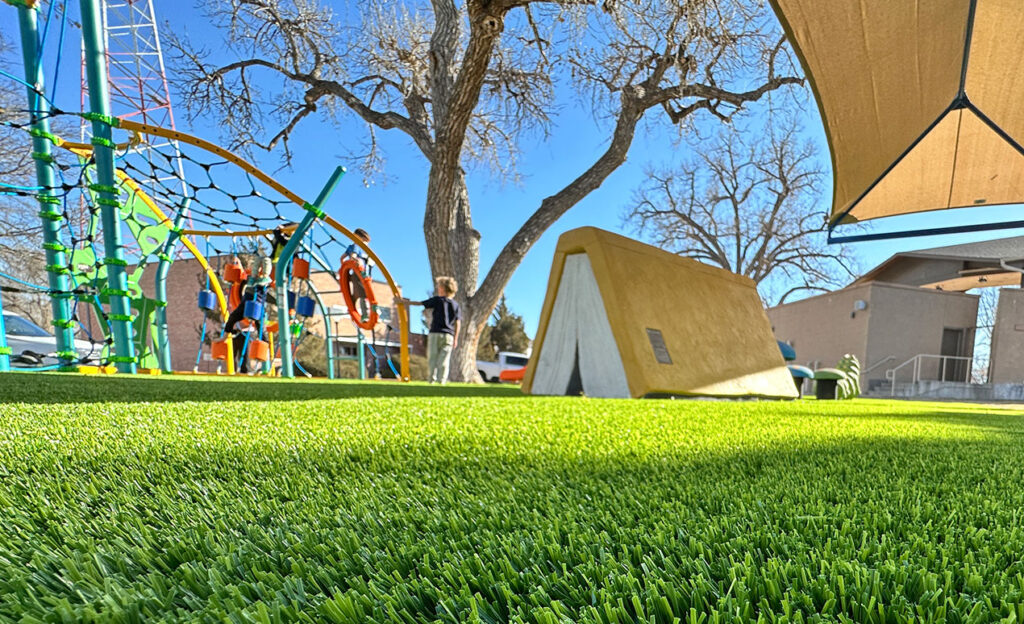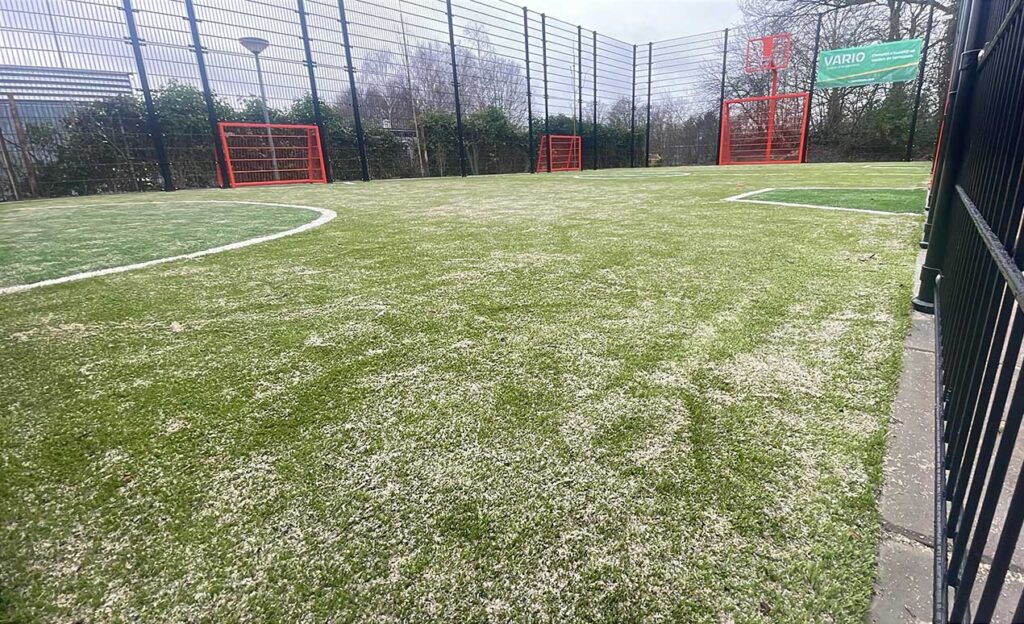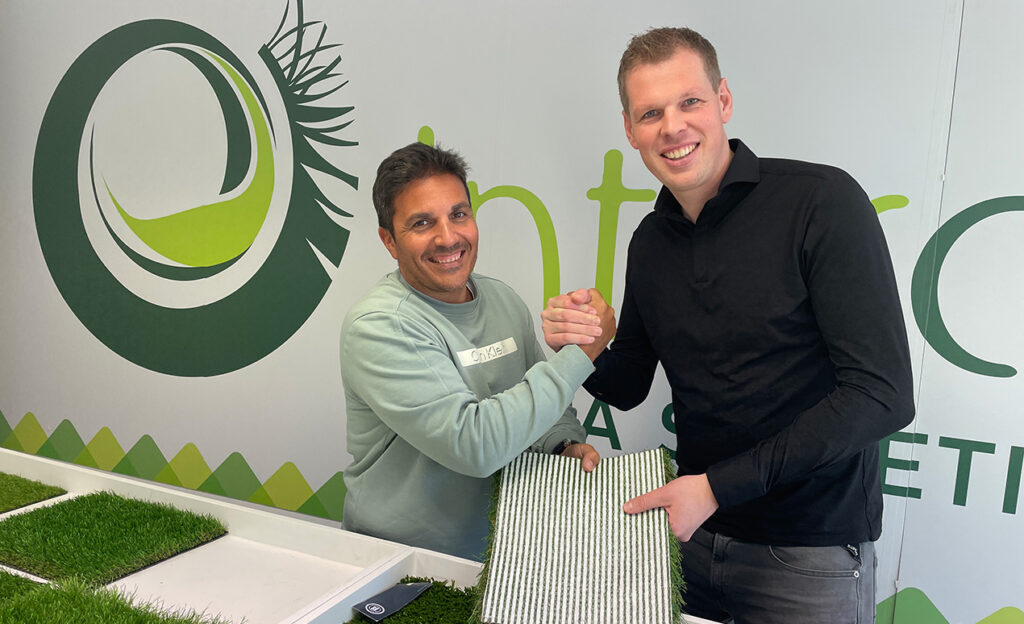The environmental impact of artificial grass is receiving increasing attention, especially as sustainability and environmental awareness take center stage. Artificial grass can be a valuable solution for green spaces, but it is crucial to consider the ecological footprint of the product itself. That’s why LimeGreen® has developed the ONE DNA™️ concept an artificial grass product fully focused on circularity, lower CO₂ emissions, and the best environmental insights based on our LCA (Life Cycle Assessment) and EPD (Environmental Product Declaration).
What is the Environmental Impact of Artificial Grass?
Artificial grass is often seen as low-maintenance and durable, but the production process and materials used can have a significant environmental impact. Traditional artificial grass consists of multiple types of materials, making recycling and reuse challenging. This often results in downcycling rather than the full reuse of original raw materials.
LimeGreen®’s ONE DNA™️ artificial grass offers a revolutionary solution. It is made from a single type of polymer (polyethylene), which simplifies recycling significantly and drastically reduces the environmental impact of artificial grass.
The Benefits of ONE DNA™️ Artificial Grass:
-
Single Raw Material for Easier Recycling
Traditional artificial grass often contains multiple materials that are difficult to separate, limiting recyclability. ONE DNA™️ uses just one raw material, making the product fully recyclable at the end of its life cycle and reusable for new PE applications. This enhances product circularity and reduces waste streams. -
Lower CO₂ Emissions During Production
Thanks to the innovative production process of ONE DNA™️, CO₂ emissions are significantly lower than in the production of traditional artificial grass. This is confirmed by our Life Cycle Assessment (LCA). By reducing emissions, we actively contribute to combating climate change an increasingly important goal as businesses strive for carbon neutrality. -
Supported by an Environmental Product Declaration (EPD)
Our EPD provides full transparency on the environmental impact of ONE DNA™️ artificial grass. This document offers independent, verified information on the product’s entire life cycle, from production to recycling. It helps architects, municipalities, and other stakeholders make informed choices about sustainable materials that meet the highest environmental standards.
Certifications That Contribute to Sustainability
ONE DNA™️ artificial grass meets all major environmental certifications. The product is free from hazardous substances (such as SVHCs), does not release harmful chemicals, and is highly wear-resistant, ensuring long-lasting use without burdening the environment. By complying with strict European standards, users can be confident they are choosing a product that is both safe and sustainable.
ESG Goals of the EU
ONE DNA™️ aligns perfectly with the European Union’s ESG (Environmental, Social, and Governance) objectives. These goals focus on promoting sustainable and responsible business practices. By choosing a product like ONE DNA™️, you invest in a future-proof solution that meets the EU’s circular economy requirements.
Our commitment to reducing CO₂ emissions, eliminating hazardous substances, and promoting circularity aligns with ESG principles, helping to achieve the European Union’s climate goals.
Conclusion: The Sustainable Choice for Artificial Grass
The environmental impact of artificial grass is a crucial factor when selecting surfaces for playgrounds, parks, sports fields, or gardens. ONE DNA™️ provides a solution that not only considers environmental concerns, but also fully aligns with modern demands for circularity and sustainability. With low CO₂ emissions, no hazardous substances, and complete recyclability, ONE DNA™️ is the artificial grass of the future.

































